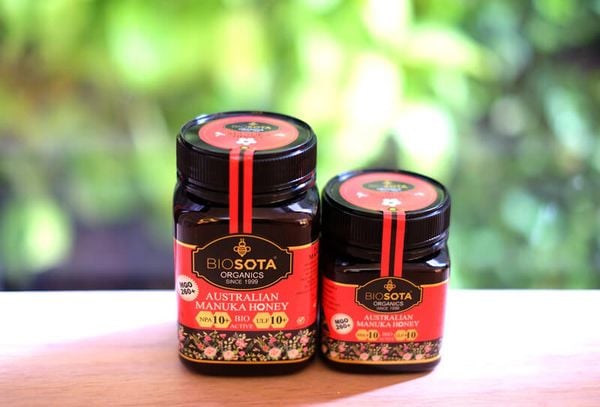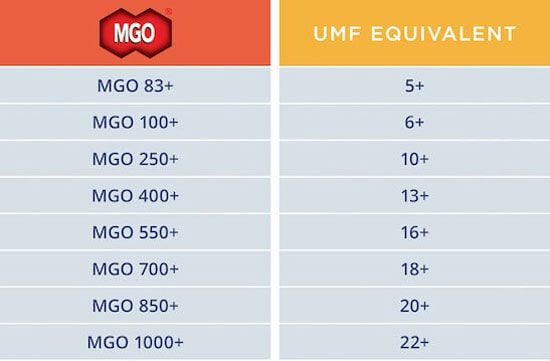When we’re out shopping for natural health products, ensuring that we’re able to invest in something that is genuine makes all the difference in our enjoyment of the product. When it comes to shopping around for Manuka honey, the amount of numbers and lettering on their labels can be confusing, such as: UMF 5, UMF 10, MGO 100+, MGO 200+…
So what are they? Continue to read
Currently, there are two common indicators used to rank the antibacterial level of Manuka honey: UMF® & MGO.
WHAT IS UMF?
UMF stands for “Unique Manuka Factor” and is a grading system developed by the UMF Honey Association in New Zealand. The UMF Honey Association grants UMF licenses to Manuka honey manufacturers who meet their rigorous standards.

UMF tracks key signature markers: Leptosperin, Methyglyoxal, and DHA as well as HMF.
All of these chemicals must be present in Manuka honey for it to be authentic and receive the Unique Manuka Factor. The final UMF number is based on all of the chemicals combined. Here are some examples of UMF potencies:
- Low Grade: UMF 5+ to UMF 9+
- Medium Grade: UMF 10+ to UMF 15+
- High Grade: UMF 15+ to UMF 20+
- Superior Rare High Grade: UMF 24+

Every Manuka manufacturer is required to hold a valid UMF license to obtain a UMF trademark on the label. Once the UMF certificate is issued, it means the Manuka honey meets the following requirements:
- Produced, Packed and Labelled in New Zealand. All honey labelled with the quality trademark UMF must be packed and labelled in New Zealand. Manuka honey cannot be imported into New Zealand.
- After Manuka honey has been packed, it must undergo a number of tests to identify its source and purity.
- UMF Manuka Honey is regularly audited so you can be sure you are getting real Manuka honey with the correct UMF number.
- Proof of Authenticity – The Official UMF Certificate is issued once Manuka honey has successfully passes all test criteria.
WHAT IS MGO?

The MGO grading system has been developed by Professor Thomas Henle in 2008.
It is primarily used by the company Manuka Health.
Manuka Health is the most popular company that uses the MGO grading system. In addition, Manuka Health conducts independent research on Manuka honey to bring new standards to the Manuka world.
MGO stands for methylglyoxal which is a chemical that naturally occurs in Manuka honey.
According to Manuka Healthy, it is the “magic ingredient” in Manuka honey that was discovered by one of their research partners – Professor Thomas Henle (University of Dresden).

Here’s a comparison between different levels of MGO and UMF:

It’s worth noting that Manuka Health is also a member of the UMF Honey Association.
Each jar of MGO Manuka Honey is tested for potency and traced from hive to home, keeping up with high standards of Manuka honey.
The higher the MGO content, the higher the grade of Manuka honey.

The UMF index on honey jars indicates that the honey has antibacterial activity equivalent to that of Phenol. That means the antibacterial ability of Manuka honey with UMF® 10 is equivalent to this ability of Phenol at 10% concentration, and UMF® 20 is equivalent to Phenol 20%.
The MGO coefficient is scientific, accurate and transparent:
- MGO ™ 100+ Manuka Honey - means that 1 kg of honey contains 100 mg of Methylglyoxal
- MGO ™ 250+ Manuka Honey - means that 1 kg of honey contains 250mg of Methylglyoxal
Professor Thomas Henle concluded that the minimum level of Methylglyoxal in Manuka honey must be 100mg (equivalent to MGO 100+) for the honey to fully fight off bacteria such as Staphylococcus or E.coli.
More information about MANUKA HONEY
See more about the types of Manuka Honey selected by Nam An Market

















